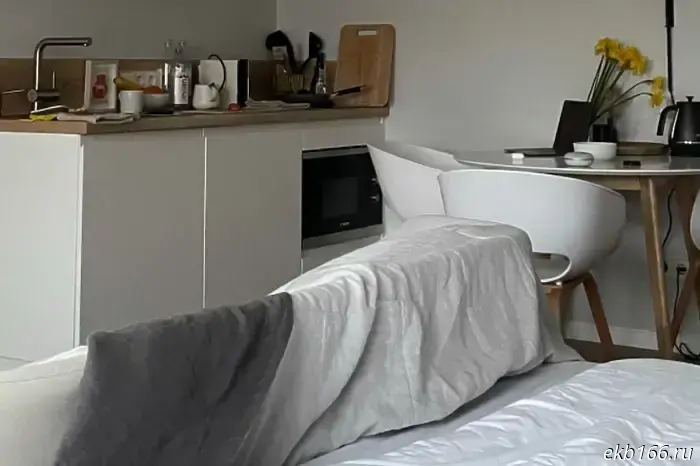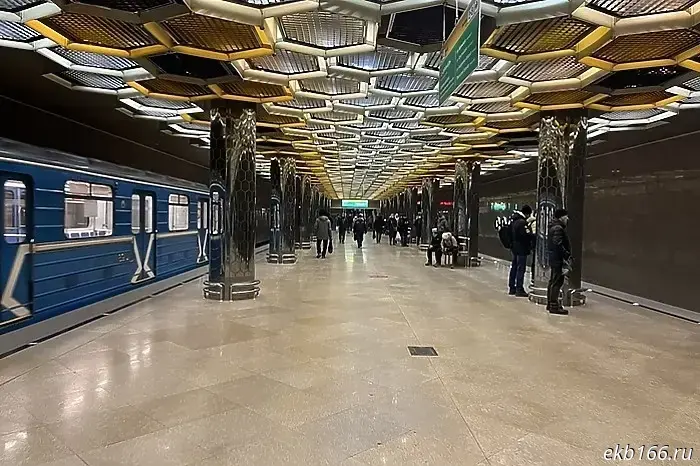
Do you know what the inside of a bear's den looks like?
How a bear’s den is arranged — in a zoo, and even more so in natural conditions — remains a question that interests many. At the same time, most people have no idea what it looks like inside, because such shelters are almost never seen directly. Bears jealously guard their personal space, and scientists manage to examine dens only in rare cases.
At the Yekaterinburg Zoo they showed for the first time what the dens look like for the local inhabitants, the bears and bear cubs.
Tian Shan bear Alma
Because of an abnormally warm autumn, not all the bears have gone into hibernation yet. The animals find it hard to adapt to the weather. They sense that temperatures outside are above freezing and continue to lead an active life. The cubs are especially lively and cheerful, full of energy! But healthy bears need to spend the winter in hibernation — it’s an important part of their biological cycle. That is why in an artificial environment all conditions are created so that the bears will happily settle into their dens until spring.
So far at the Yekaterinburg Zoo only 37-year-old grandfather Guy has gone to sleep. The Himalayan bear cubs Kira, Aysar and the Tian Shan bear Alma are still awake for now, but they are gradually being prepared for sleep as well.
The young she-bear Kira is very active
Before the bears go to sleep they are fed abundantly. This is called "zazhivka" (fattening). Before sleep a bear should be well-fed and plump so that its wintering goes comfortably. The predator’s condition is judged by its fur: it should be thick, dense and glossy.
At the zoo the bears’ dens are located behind the open enclosures. It’s a long corridor with many doors fitted with secure latches and small windows. These are the very dens for the bears.
The bear’s diet is rich!
To ensure the animals’ comfort, the room is lined with fir branches and a thick layer of straw is added on top, often almost up to the ceiling. The bears then make their own "bed" on site.
Each den has a small window that staff look through daily to check on the animal’s condition.
In winter the bears are also given extra food: they are given porridge without additives and a sandwich with fish oil.
In the video the bear Aysar is in his den. The little bear pushes the tray aside and asks for something tasty.
Interesting fact: bears suck their paw during hibernation not out of hunger. In fact, the skin on the animals’ paws dries out in winter, and the bears moisturize it with their own saliva. It’s as if they are applying cream to their paw.
In general, bears’ sleep is quite light and not deep. That is, the animal is not in a deep sleep state for the entire cold period until spring. The bears toss and turn, sometimes even eat, but of course they are not as active as in summer.
In the forest a bear also goes into hibernation well-fed and fat. By the way, it is hungry bears that often wake up in the middle of winter and become wanderers. Those are very dangerous. The other bears wake up in normal condition when it gets warm. In the zoo these cycles are similar.
Polar bears, of which there are now two again in our zoo (Vilyuy and Khatanga), do not go into winter dormancy at all. Winter for them is a time even more active than summer. The exception is pregnant females. They make dens in the snow and spend several months there, giving birth to and nursing their cubs.









Другие Новости Екатеринбурга (ЕКБ166)
 A realtor named the prices at which residents of Yekaterinburg rent out apartments and rooms.
Nikita Slovikovsky, founder of the rental portal and real estate agency Drazhe, named the average rental price for a room and for the most popular apartment types in Yekaterinburg.
A realtor named the prices at which residents of Yekaterinburg rent out apartments and rooms.
Nikita Slovikovsky, founder of the rental portal and real estate agency Drazhe, named the average rental price for a room and for the most popular apartment types in Yekaterinburg.
 Trams have stopped on Tatishcheva Street.
It wasn't a good morning. Passengers dissatisfied with the new high-capacity tram couldn't get to work. This time service on the line was blocked by an old tram from route 19.
Trams have stopped on Tatishcheva Street.
It wasn't a good morning. Passengers dissatisfied with the new high-capacity tram couldn't get to work. This time service on the line was blocked by an old tram from route 19.
 A reckless elderly driver was killed in a crash near Verkhnyaya Pyshma.
An elderly driver was killed in a three-vehicle crash on Monday, November 17, at the 2nd kilometer of the Verkhnyaya Pyshma–Sredneuralsk road, the Directorate of the Russian State Traffic Inspectorate for the Sverdlovsk Region reports.
A reckless elderly driver was killed in a crash near Verkhnyaya Pyshma.
An elderly driver was killed in a three-vehicle crash on Monday, November 17, at the 2nd kilometer of the Verkhnyaya Pyshma–Sredneuralsk road, the Directorate of the Russian State Traffic Inspectorate for the Sverdlovsk Region reports.
 Funds were allocated in the Sverdlovsk Oblast budget for the development of the Yekaterinburg metro.
The Sverdlovsk Region's 2026 draft budget allocates 1 billion rubles in subsidies to the Yekaterinburg administration for the development of the public transport system, including the metro.
Funds were allocated in the Sverdlovsk Oblast budget for the development of the Yekaterinburg metro.
The Sverdlovsk Region's 2026 draft budget allocates 1 billion rubles in subsidies to the Yekaterinburg administration for the development of the public transport system, including the metro.
 The Hong Kong flu has arrived in Russia.
Influenza incidence continues to increase in Russia; 2,900 cases were detected over the week, Interfax reports, citing Rospotrebnadzor.
The Hong Kong flu has arrived in Russia.
Influenza incidence continues to increase in Russia; 2,900 cases were detected over the week, Interfax reports, citing Rospotrebnadzor.
 A foreign-made car with Sverdlovsk license plates ended up under a truck in Tatarstan.
Two people in a car bearing license plates from Sverdlovsk Oblast were victims of a traffic accident that occurred last night in the Tukaevsky District of the Republic of Tatarstan.
A foreign-made car with Sverdlovsk license plates ended up under a truck in Tatarstan.
Two people in a car bearing license plates from Sverdlovsk Oblast were victims of a traffic accident that occurred last night in the Tukaevsky District of the Republic of Tatarstan.
Do you know what the inside of a bear's den looks like?
How a bear's den is arranged — in a zoo or in the wild — remains a question that interests many. At the same time, most people have no idea what it looks like on the inside, because such shelters are almost never seen directly.
